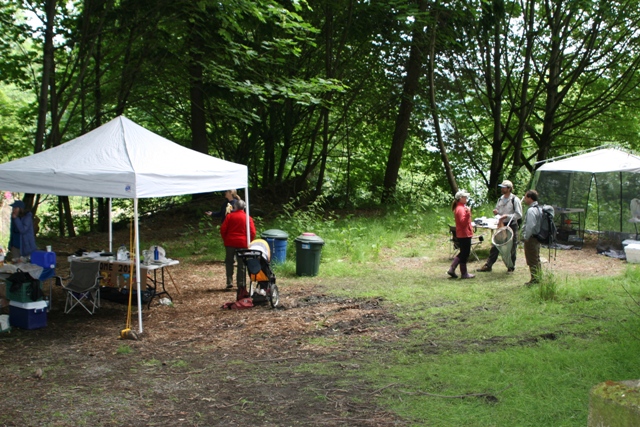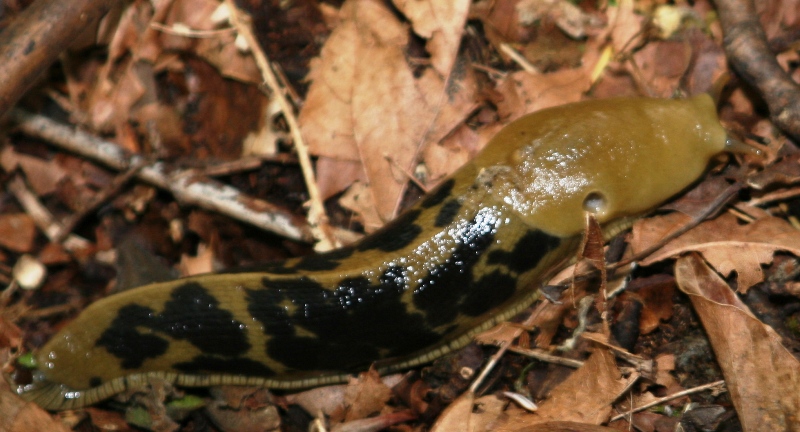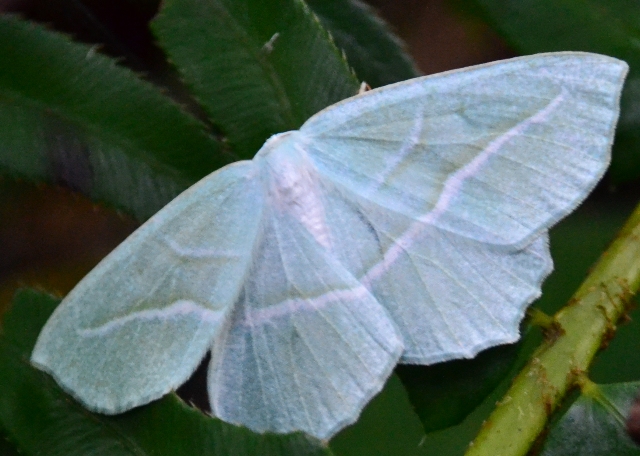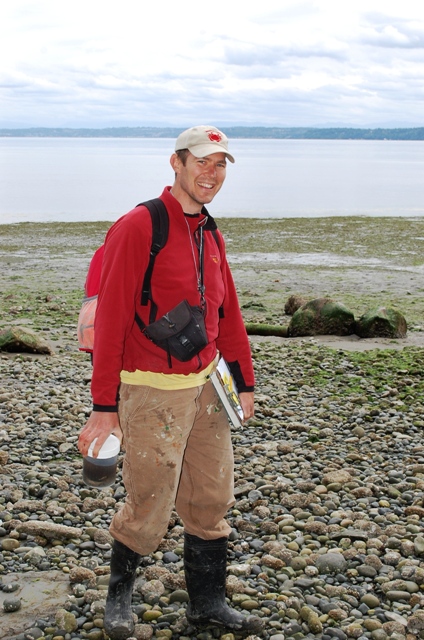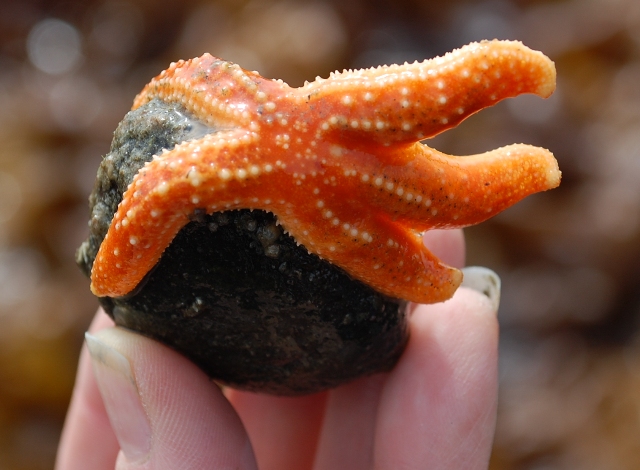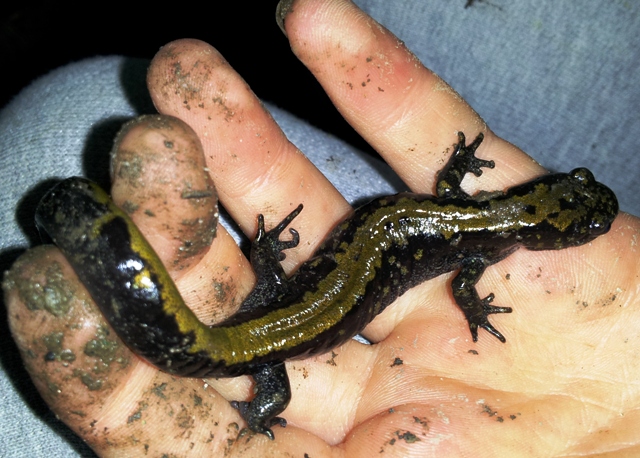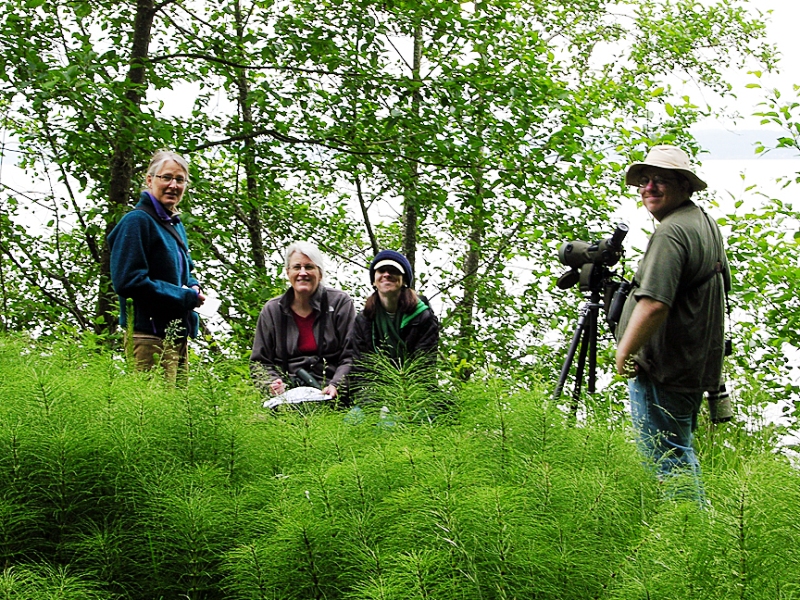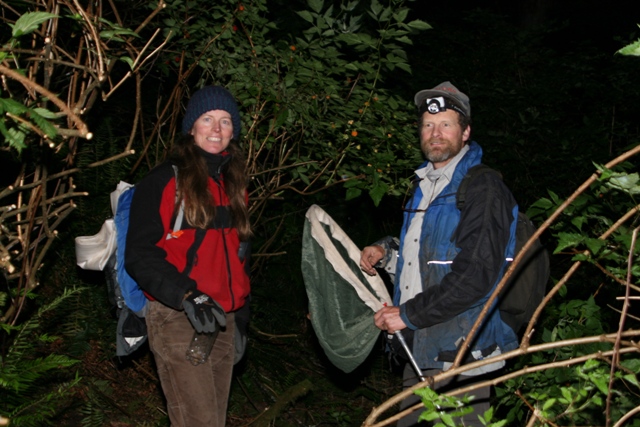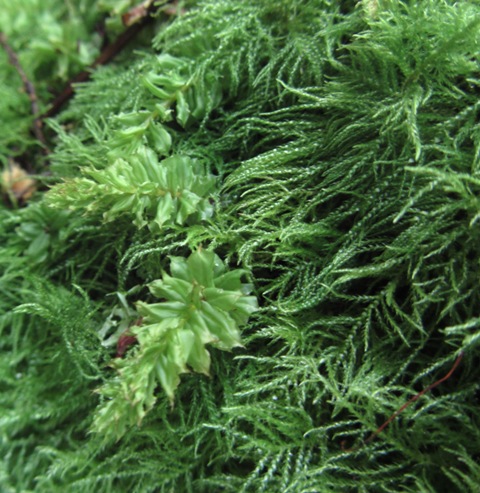My daughter and I arrived at Neill Point, unloaded the car and took a look around the maple-ringed clearing. We were the first to arrive, could we start counting yet? The sun broke through for the first time all week (part of the magic of our Island BioBlitz was the seemingly preordained weather—24 hours without rain between bookends of precipitation) and a Western Tiger Swallowtail fluttered towards us, then stopped on a blackberry leaf to flex her wings. We had our species #1.
A BioBlitz is a 24-hour marathon for nature lovers. A citizen-science effort disguised as a treasure hunt—groups of scientists, naturalists and curious citizens join together and do their best to document every living organism within a prescribed geographic area on one calendar day. Vashon Nature Center’s 2012 BioBlitz was held June 2-3 at Neill Point, a King County Natural Area located about a half-mile east of the Tahlequah ferry dock. Made up of mixed woods, shoreline, beach and ponds, the site offers the enticing variety of habitats desired in a quest for biodiversity.
After the butterfly made her appearance, Alex and I couldn’t help but notice new species everywhere: a fetchingly spotted banana slug, a red millipede, an orange fungus and a shimmering green fly. Suddenly a forest painted in broad strokes became a detailed still life—every minute life-form jumping out at us as if asking to be counted.
Soon others arrived and the BioBlitz began in earnest. The plant group chaired by island gurus John Browne, Jim Evans, and Erin Kenny set off with sample sacks, well-thumbed guidebooks and smiles to find all things chlorophyll. Slater Natural History Museum Collections Manager Gary Shugart ventured into the pond with a net. Not as shallow as expected, the water threatened to breach the top of his hip-waders as he scooped Red-Legged and Chorus Frog tadpoles along with Long-toed Salamander larvae into a display tray. (Our goal was to avoid killing any creature and to document our discoveries with notes and photos.)
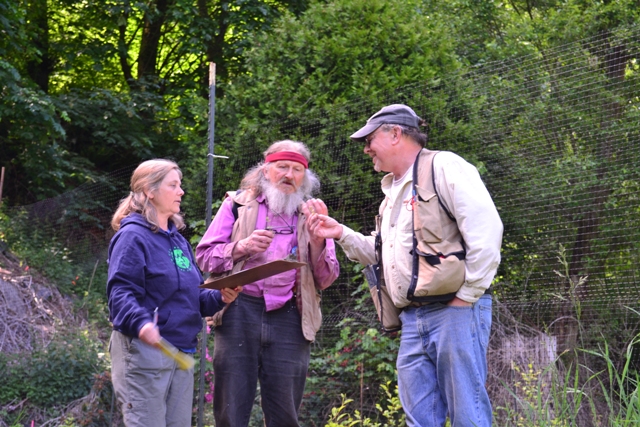
Part of the plant group. Erin Kenny, John Browne, and Jim Evans discuss a species. photo by: Maria Metler
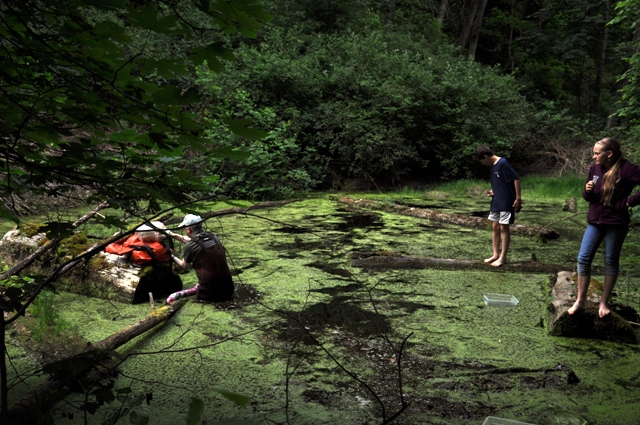
Gary Shugart looking for all things aquatic with support from the author’s daughter Alex Koriath and Kieran Enzian. photo by: Bianca Perla

Numerous photos were taken up close and personal of hundreds of insects including this Diptera (fly) species. photo by: Alison Kennedy-Taylor.
Insect people arrived with dissecting scopes, tweezers and thick tomes on Diptera (flies,that is) and other orders. Birders trained their scopes on the Sound and kids scoured the forest floor. “We found a dead fish!” one called. One of the more interesting finds of the day, it was a Plainfin Midshipman—a small, sculpin-shaped deepwater fish that spawns in the inter-tidal zone. This specimen had a hole on its belly in what Marine Biologist Jeff Adams said was characteristic of other midshipman kills: eagles so surgically correct in their eating preferences that they puncture their prey, extract only the choicest parts, and then drop the remains to the ground.
As Gary set aquatic animal traps in the pond to capture live critters overnight, my daughter ventured out onto a floating moss-covered log. Almost 13, she doesn’t linger at our small pond at home like she used to. But her love of water critters was reignited in the community search for new species and the thrill of the count. Soon she’d found freshwater snails, an isopod, a leech, and a water beetle barely larger than the tip of a pencil. Life was pouring out everywhere we looked: Count me! I count! Count me!
New finds were contained and transported to “base camp,” where scientists worked with other volunteers to try to key out their genus and species.
Heidi HansPetersen, an entomologist, popped that tiny water beetle under her microscope. It was a type of diving beetle known for carrying its own oxygen supply. What looked like a cylindrical piece of plastic clutched to its chest was instead the critter’s personal SCUBA tank. What would at casual glance have been a black dot with barely discernible legs became a fantastic creature capable of securing its own oxygen source for deepwater dives!
That’s part of the magic of a BioBlitz, the eyes and ears of amateurs deliver specimens to the experts who do their best to tell each one’s story. This made a lasting impression on the “finders.”
All told, our 24-hour count yielded 285 species not including insects. Experts are examining photographs to try to name all of Neill Point’s six-leggeds found that day, so our total is growing.
Many interesting finds were found by kids and non-scientists:
—Carlos Adams-Tres (age 6) found a Vagrant Shrew in daylight, which is uncommon
—Volunteer Photographer Ed Otto found an intact deer skeleton
—The DiChiara family found the only Long-toed Salamander adult of the count
—Rhea Enzian (age 14) found a Skeleton Shrimp
Ecologist and BioBlitz mastermind Bianca Perla says one unexpected count outcome was a whole new perspective on her island home:
“Although Neill Point has many different habitats, it is by no means pristine. It has a history of human use, it is actively sliding into the Sound, and it may have been affected by paper mill exhaust. We can learn things both from what we found and what we didn’t find. This could be anyone’s backyard on Vashon– 285 to 500 species (estimating with insects added) is quite a lot of life happening right around us. This complexity of life usually slips under the radar in my everyday life, but once I experienced looking for diversity and being intensely aware of it for 24 hours it changed my perspective on living here. I feel like I’m walking around with a much wider awareness of life on this island now. I think others who attended feel the same way. That is probably the biggest highlight for me!”
The reawakening of child-like wonder that Bianca describes is also a lingering gift of the BioBlitz experience for me, and my daughter. The day after the Blitz, Alex dug out our old microscope and marveled at the delicate hairs of a bright green caterpillar, and the compound eyes clearly visible in the exuvia (discarded shell) of a leaf hopper.
Everyone who participated contributed to a sort of exponential up-welling of delight. “What’s that?” “Wow!” “Incredible.” “Amazing.” These words rang through Neill Point as we expressed awe and appreciation for our wild neighbors.
Thank you to every one of the BioBlitzers who made it happen—from Beulah Ellison-Taylor, an inspiring five-year-old naturalist who got up at 3 am for the owl count and refused to stop counting specimens until the BioBlitz officially ended at 3 pm on Sunday—to Alan Warnake and Michelle Ramsden who lugged a heavy battery and black light around at 1 am to attract night-flying insects—to Phoebe Goit, a lichen and moss expert who traveled from Poulsbo to help us ID more than 35 mosses, lichens and liverworts. You all counted and you count!

Beulah Ellison-Taylor having a well earned nap after a hard day’s work photo by: Alison Kennedy-Taylor.
A BioBlitz rewards us for paying close attention: Species #1 was the one and only butterfly of the count.
For more photos, species lists and reports from Vashon Nature Center’s first annual BioBlitz, or for information on upcoming events, please periodically check out our BioBlitz page. We update it as information comes in.

